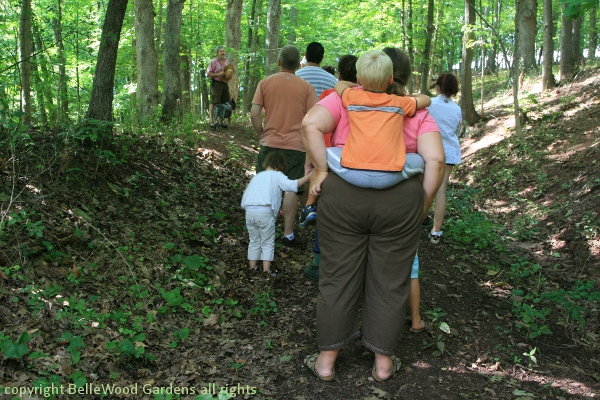
Sunday, 12 August 2012
Cows Outside at Bobolink Dairy
One of the vendors at the Dvoor Farm Farmers Market is Bobolink Dairy, purveyors of wonderful artisan cheeses and breads. A visit to their web site revealed that they fairly frequently offer Sunday afternoon tours of the farm for a modest $5 per person. What fun! So, back from the farm market and after lunch I hied myself over and joined the group.

Apparently I'm not the only one with this idea. A few minutes late, I find myself the tail end of
two dozen people trudging up the shady forest track, warned by Paulie to avoid the electric fence.
At Bobolink Dairy it's cows outside since they're Kerry cattle, easy keepers and sturdy stock.
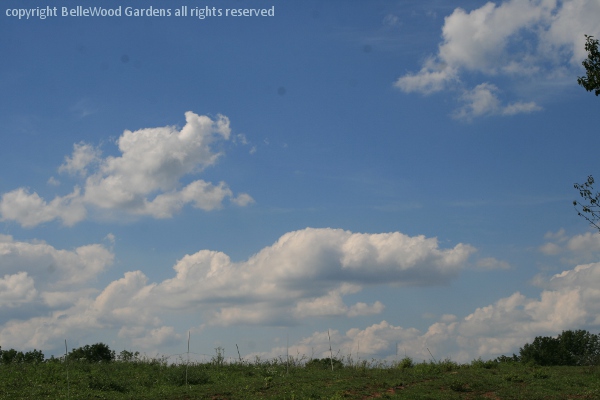
We reach the pasture at the top of the hill and step out into sunshine. And amid the cows.
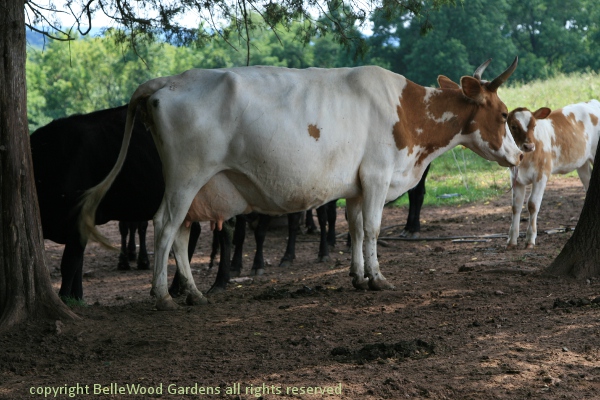
Jonathan and Nina are developing their own breed of cows, the Bobolink Blacks. Based on the ancient Kerry cattle of Ireland (a smaller, sturdy, "family cow" type animal) they are adding an admixture of several common "modern" dairy breeds (Ayreshire, Guernsey, Jersey, etc.) Kerrys have a long useful life, still strong and calving regularly, often producing at 14 and 15 years of age. It's a different approach from commercial dairies. For example, at Bobolink Dairy they milk just once a day, rather than the two or even three times a day of the typical Holstein herd. Smaller daily output but longer term. Commercial dairies instead look for high yields over short term and replace the herd frequently, sending their cows off to become hamburgers at a significantly younger age. Kerrys are thrifty to keep. Smaller cows need less space and at about 800 pounds / cow, stepping more lightly on the land so they compact the soil less also. The more they graze, the less need for grain. All of which, to repeat myself, make Kerry cattle easy keepers.
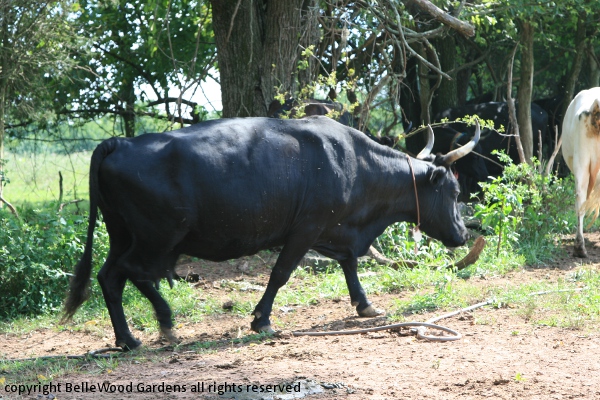
Liberty, the black cow shown here, is 20 years old, had a calf this spring and is still milking. This is exceptional though.
Jonathan pointed out details: small udder, her nice brisket, and the black tipped white horns are typical of Kerry cattle.
The Whites first bull, John, was kept for just two years before moving on to a different farm before he might breed
his daughters. He was replaced by a third cousin, as genetically far apart as they could manage when you consider
the limited gene pool for this ancient breed. Why bother with these cows that gives only a modest amount of milk?
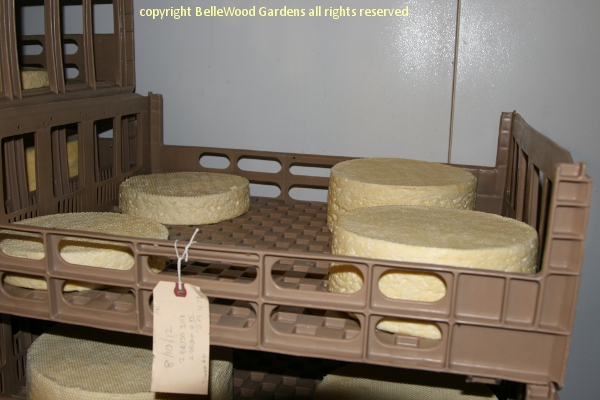
Cheese, beautiful cheese made from raw milk and aged a minimum of 60 days. You see,
the globules of butterfat in Kerry milk are much smaller than those found in other breeds.
That not only makes it easier to digest, but also excellent for cheese and yogurt production.
The cows each produce about 10 pounds per day, and cheeses are also made once a day.
Seen here are new made cheeses, infants, so to speak. They need to mature, to develop, to ripen.
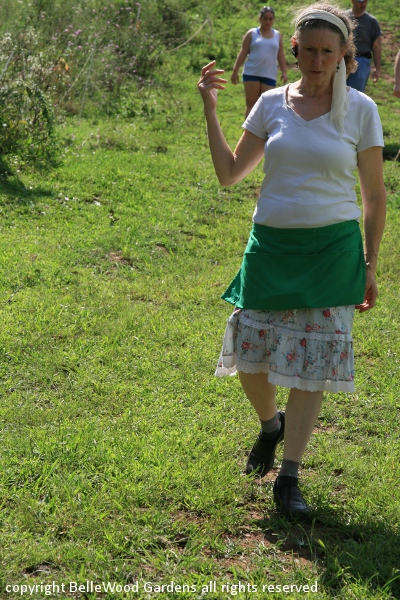
Here's Nina, the cheesemaker. Her artisanal cheeses are superb. The cheese room,
kept at 52° Fahrenheit (the temperature of earth that cools my well water year-round)
is alive with wild fungus. The cheeses are made with whey rich with the microherds that
the distinctive flavor, the terroir of Bobolink Dairy. Little rennet. Commercial dairies use
lots of rennet and look to churn out a batch of cheese every four hours, six batches a day.
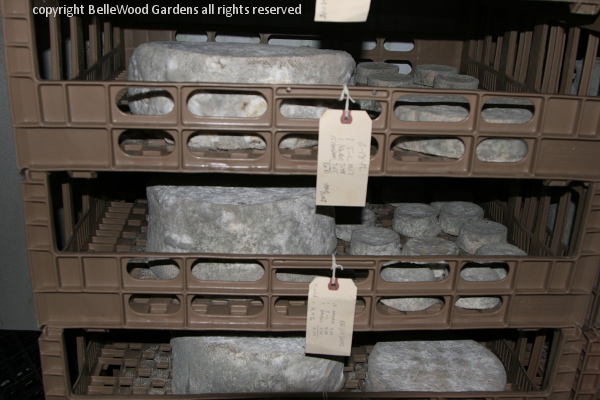
Each batch of cheese is labeled with its date and its name / type. And when it is time
(quicker for the little cheeses, longer for the big majestic wheels), why then, time to eat.
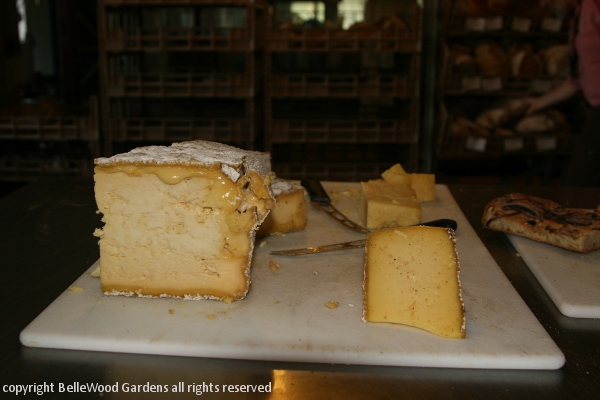
.
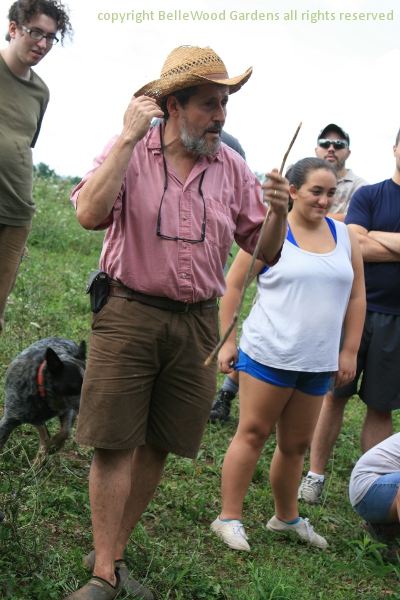
Jonathan clearly loves his cows, the farm, the connections of land and lives and good food. He is the bread baker. If you've ever had truly great bread you understand how applicable is the sobriquet when we call it "the staff of life." As I child, if I'd beg for a snack before dinner my mother would tell me to take a piece of bread. If I wanted something else she'd tell me I wasn't hungry. Those days come back to me now, for nothing satisfies as well as a piece of good bread.
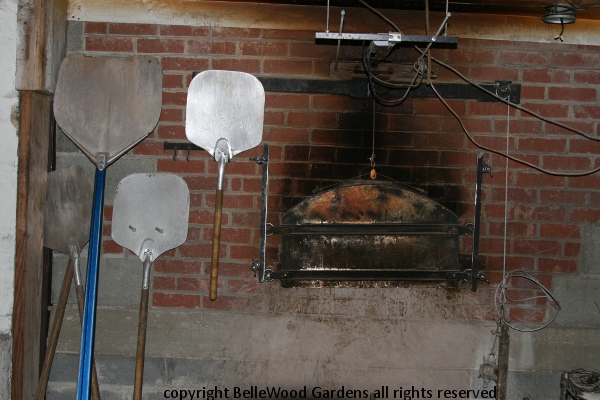
How it's baked is important too. Bobolink's bake house has a 48 inch by 72 inch wood fired masonry oven, designed by Alan Scott. Jonathan made two changes - a second, outside door so firewood can be loaded from outside the building. And, since Jonathan is an engineer by training, remote reading sensors buried in the masonry so temperatures may be monitored on a computer, from home.
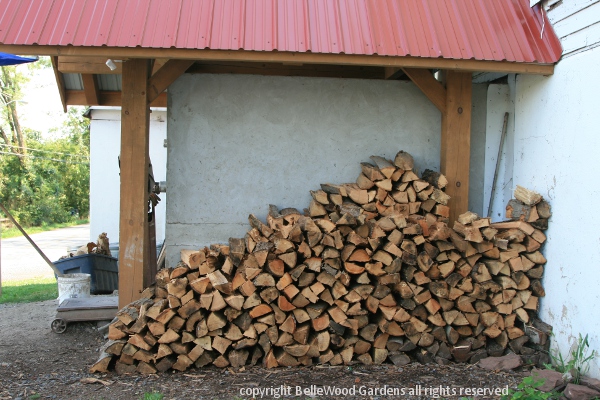
It takes 250 to 300 pounds of well-seasoned mixed hardwoods to fire the stove overnight.
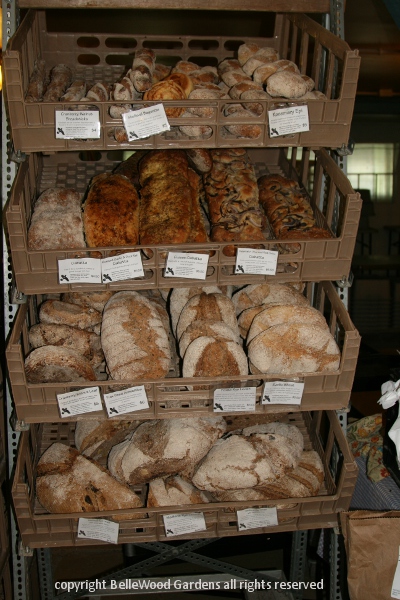
Wonderful breads: ciabatta, levain style rye, baguettes, rolls, from regionally grown
organic grains. Some embellished with kalamata olives, or garlic, red onion,
or duck fat. Or, but of course, with cheese. Even available by mail order.
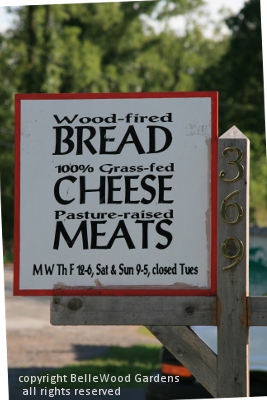
In season they are at Sunday morning Dvoor Farm farmers market.
They have their own store. They sell by mail. Wonderful bread and cheese.